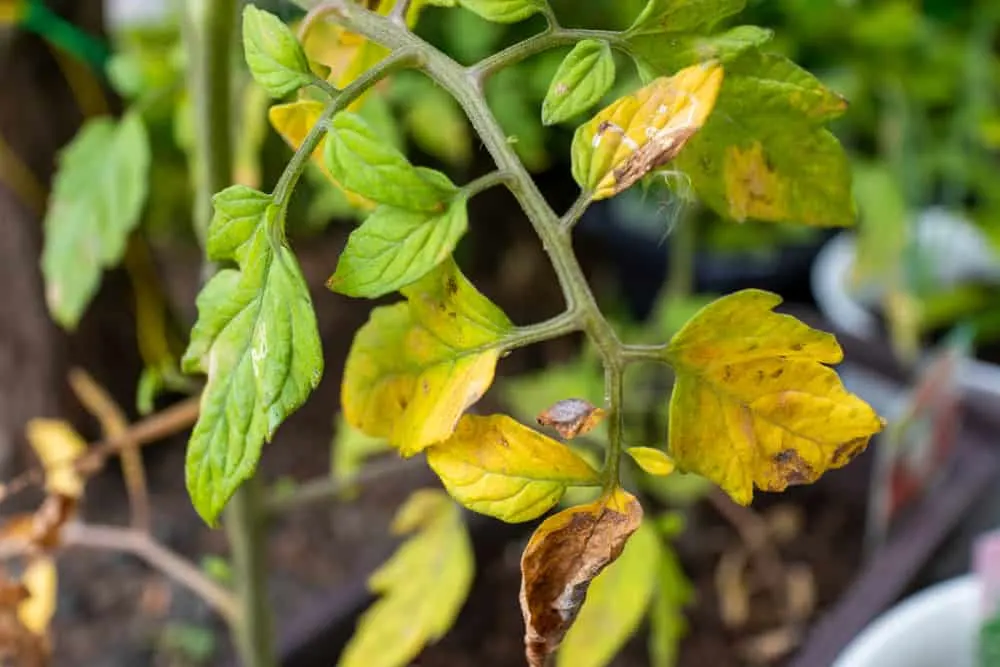
Nothing gets you quite hooked on growing your own vegetables like growing tomatoes. These juicy, red fruits are amongst the easiest vegetables to grow and are perfect for newbie gardeners and busy seasoned green thumbs alike.
However, as easy going as tomatoes are, they’re not without their problems. Whether you’re growing them for the first time or are a veteran tomato grower, you might face several issues, including browning plants.
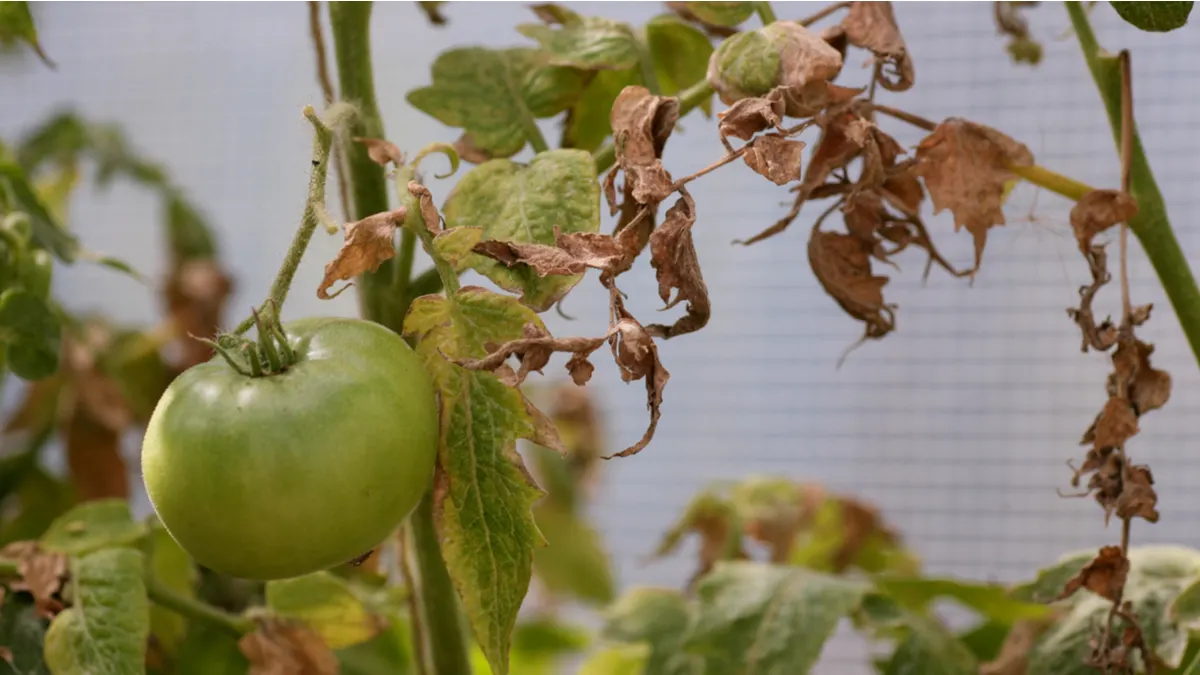
There are a few reasons why your tomato fruits, leaves, or stems may be losing their bright colors and taking on a sickly brown. However, most are easily fixed and preventable.
1. Underwatering
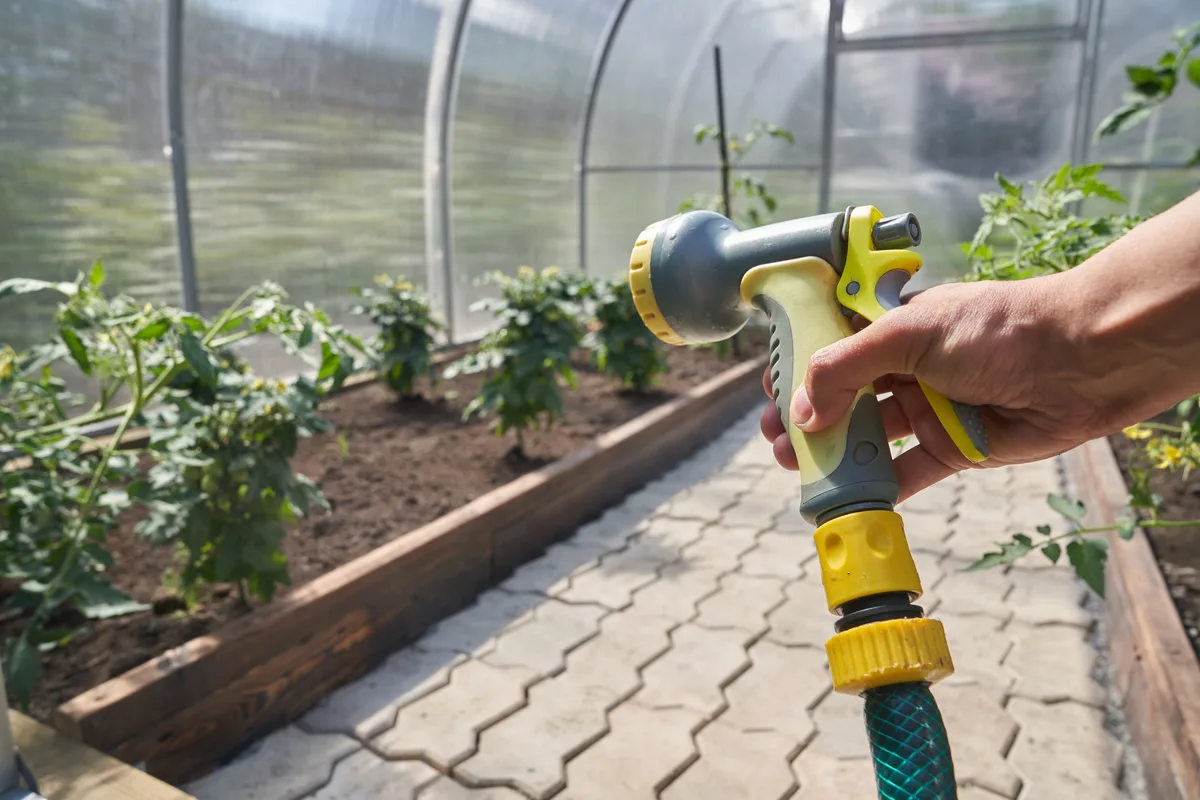
If you notice your tomato plant’s leaves looking crispy with browning edges, chances are you’re underwatering it. A lack of water, along with the incorrect watering methods, are often the very first problem causing browning tomato plants. While these plants hate being drenched in water, they are quite thirsty, needing to be watered deeply and frequently.
Underwatering your tomato plants can quickly move from browning leaves to wilting and defoliation. It can also result in blossom drop, meaning you won’t get any fruits come summer. However, if your plant does fruit, your tomatoes may be hard and dry.
How to Fix
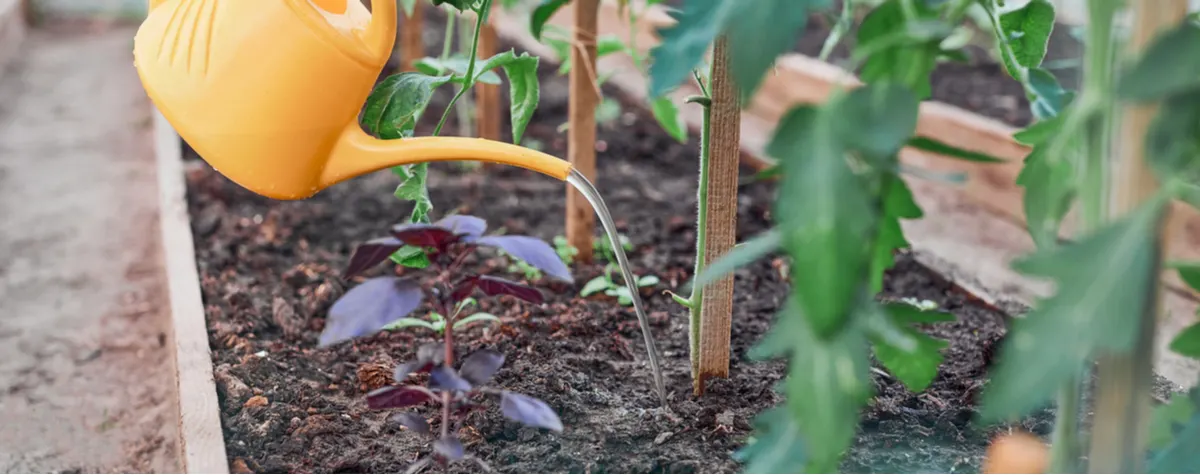
The best way to prevent and fix browning, crispy leaves is to water your plants correctly.
Tomato plants should be watered slowly, deeply, and frequently. This is especially important when the plant is establishing itself. But you should keep up with this habit, even when your plant is strong and seemingly healthy.
Tomato plant root systems run deep into the soil, sometimes reaching as far down as five feet. Shallow watering means these deep roots don’t get sufficient water, which results in water stress and browning leaves.
The best way to water is to focus the water on the soil around the base of your plant. It’s also important to avoid overhead watering as much as possible as it causes splashing, which helps spread disease.
Water your tomato plants in the morning when it’s cool. Less evaporation takes place at this time, which saves water and ensures your tomato plants have enough water throughout the day.
When you water your tomato plants is just as important as how you water them. As they don’t enjoy being drenched in water, you shouldn’t water your tomatoes when the soil is still wet.
2. Blossom End Rot
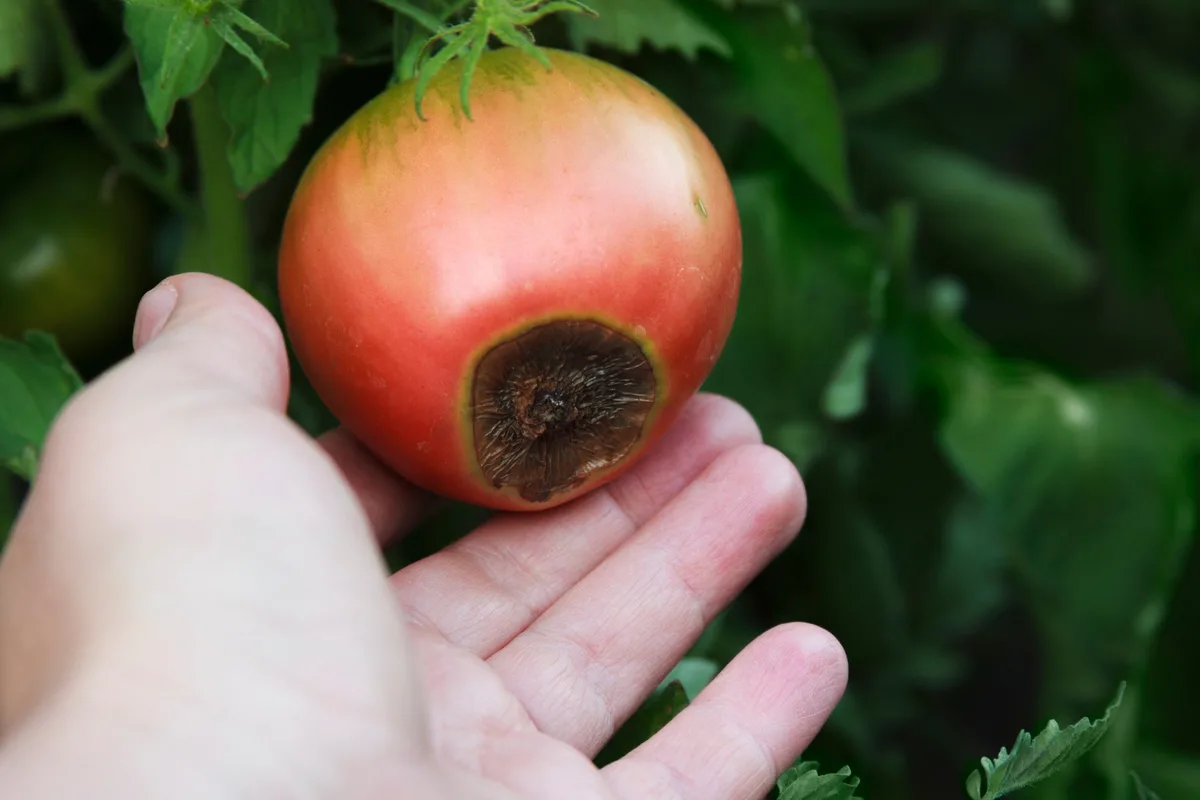
Strange brown discoloring can also occur on tomato fruits. If you notice brown, mushy spots at the bottom of your tomatoes, you’ve got a case of Blossom End Rot. While this disease sounds like it could kill your plants, they can quickly bounce back with the right care.
The rot usually starts at the blossom end of the tomato fruits, looking like a water-soaked, pale brown spot. As it develops, the blossom end becomes dark brown and leathery, and eventually black. The rotted end also flattens out as it spreads.
Blossom End Rot usually appears when the tomato fruits reach about half their mature size. Unfortunately, once a fruit develops Blossom End Rot, it needs to be removed and discarded.
There are many causes for Blossom End Rot, such as overwatering or inconsistently watering your tomato plants, or a calcium deficiency.
If you’re watering your tomato plants correctly, following the tips above, you might be facing soil issues.
A calcium deficiency is a result of several factors, usually involving the plant’s ability to absorb calcium rather than a lack of calcium in itself. Incorrect pH levels, too much nitrogen, and soil temperature fluctuations can all affect calcium absorption. Make sure conditions are perfect to prevent this problem in future.
How to Fix
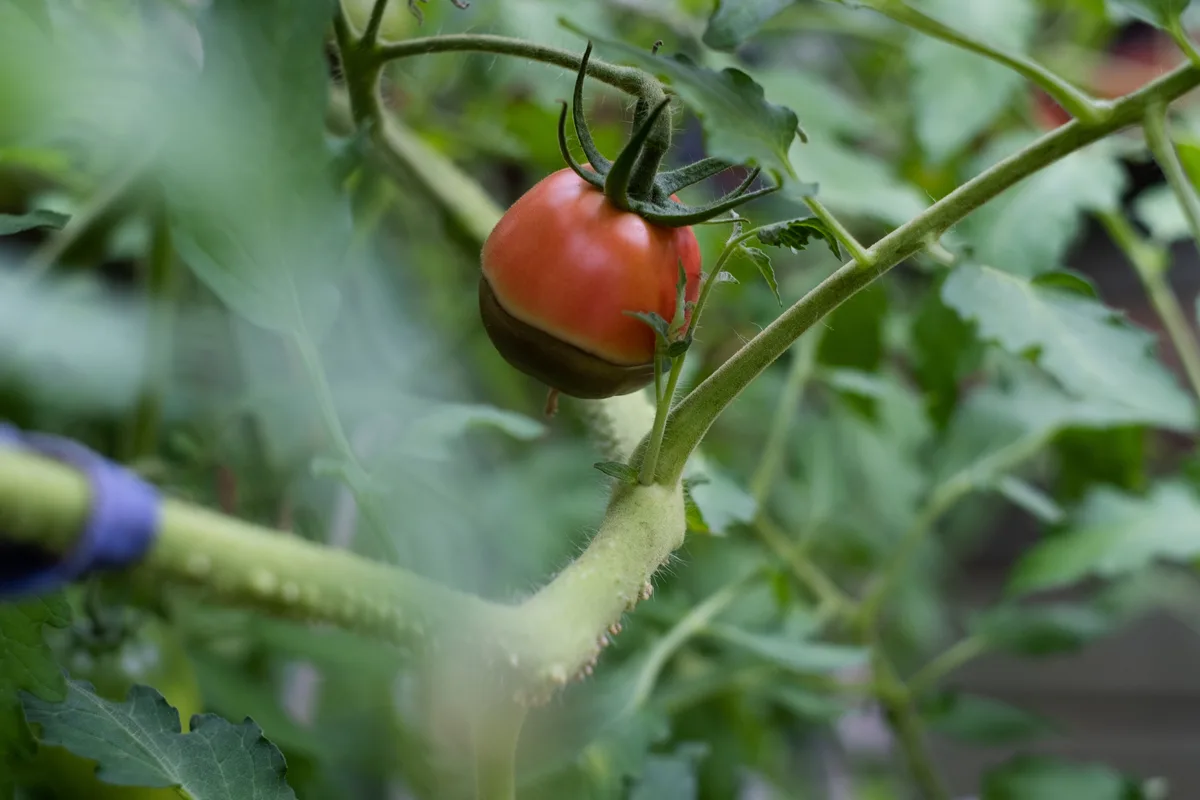
The best way to pinpoint your soil issues is to have your soil tested. From there, you can amend your soil.
Tomatoes grow best in slightly acidic soil. If your soil test results show a more alkaline pH level, you may need to add some amendments like compost to slowly alter the pH over time. On the other hand, if your soil is too acidic, amend it using lime.
If you find your soil test states that there is too much nitrogen, you may need to adjust or change your fertilizer. Too much nitrogen not only affects how much calcium your tomato plants take up but also how much foliage it develops. A key symptom of high nitrogen levels is leggy, bushy tomato plants with small fruits. The right fertilizer is extremely important for the overall health of your tomato plants, not just to prevent Blossom End Rot.
Use a low nitrogen, high phosphorous fertilizer when feeding your tomatoes for the best results and to avoid calcium absorption issues.
Sometimes, the soil temperature is too hot or too cold, affecting how effectively the plant takes up nutrients. The best fix is to mulch around the base of the plant using materials like straw. Mulching regulates soil temperatures and maintains the correct moisture levels.
3. Spider Mites
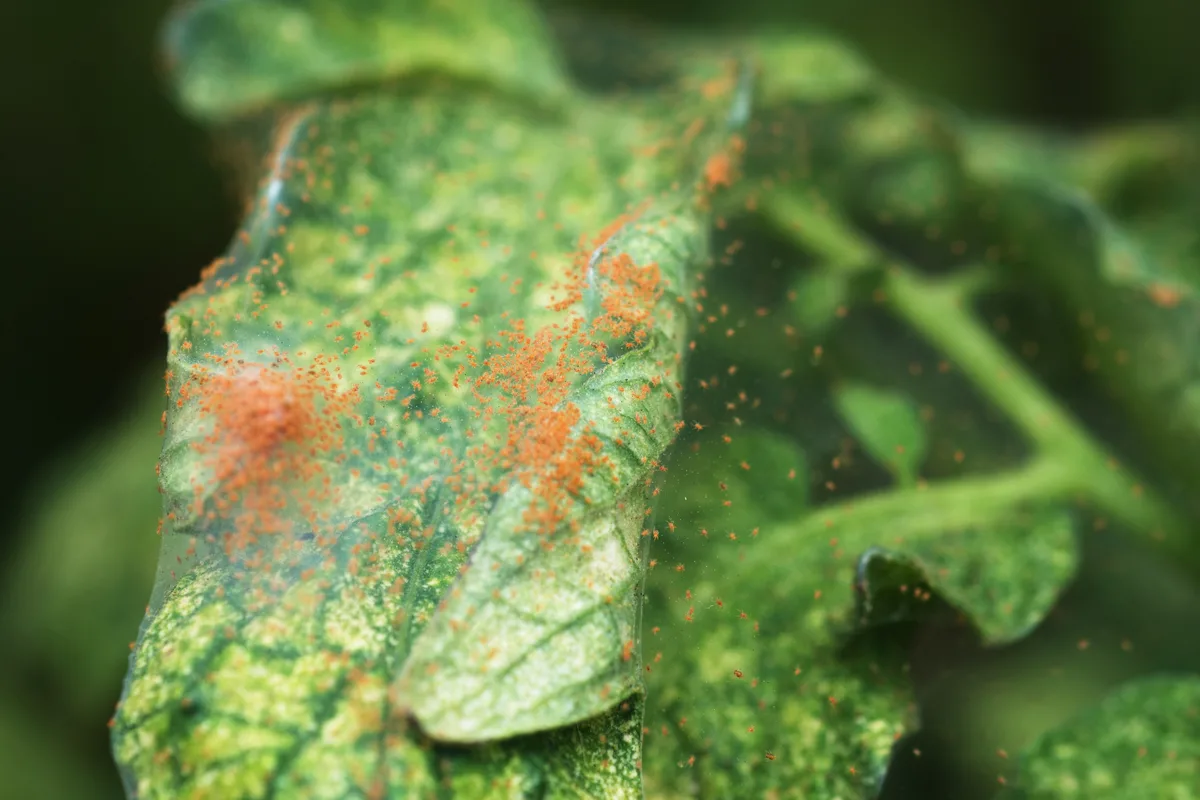
Spider mites are common, tiny pests that can quickly wreak havoc on your tomato plants. If you notice strange brown specks across your tomato plant leaves, accompanied by thin webbing, you’ve got a spider mite problem on your hands.
Also known as two-spotted mites, these pests love to infect tomato plants in large groups, nestling on the undersides of leaves. Like aphids, spider mites suck on the sap from leaves, which causes strange brown spots.
This results in the drying of leaves, turning them reddish-brown and sometimes yellow. The leaves will eventually die and drop. If left unattended, spider mites can quickly strip plants of their leaves, resulting in the death of the plant.
How to Fix
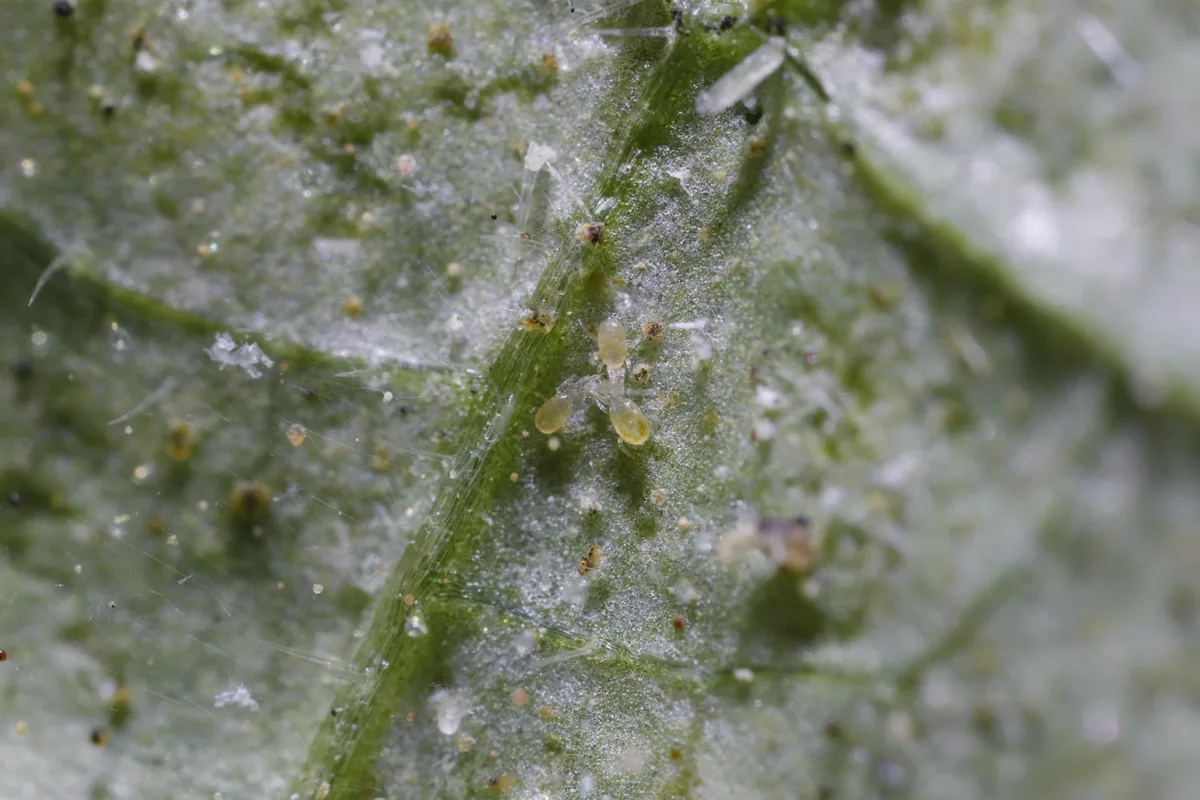
These tiny pests thrive in dry, hot climates. The best way to prevent spider mites from settling on your tomato plants is by impacting the immediate environment.
The correct watering methods help keep your tomato plant moist and happy, stopping spider mites from going near them. You can also ward them off by introducing good parasitic pests to your garden.
There are several ways to get rid of these tiny pests before they do too much harm if they’ve already settled on your plants.
Small infestations are easily managed using horticultural sprays, such as Neem Oil. Alternatively, you can use insecticidal soaps. Both smother spider mites and larvae, often stopping the infestation in its tracks.
However, if webbing continues to spread and the health of your plants continues to deteriorate, despite the steps you’ve taken, you may need to uproot and dispose of your plant.
4. Bacterial Leaf Spot
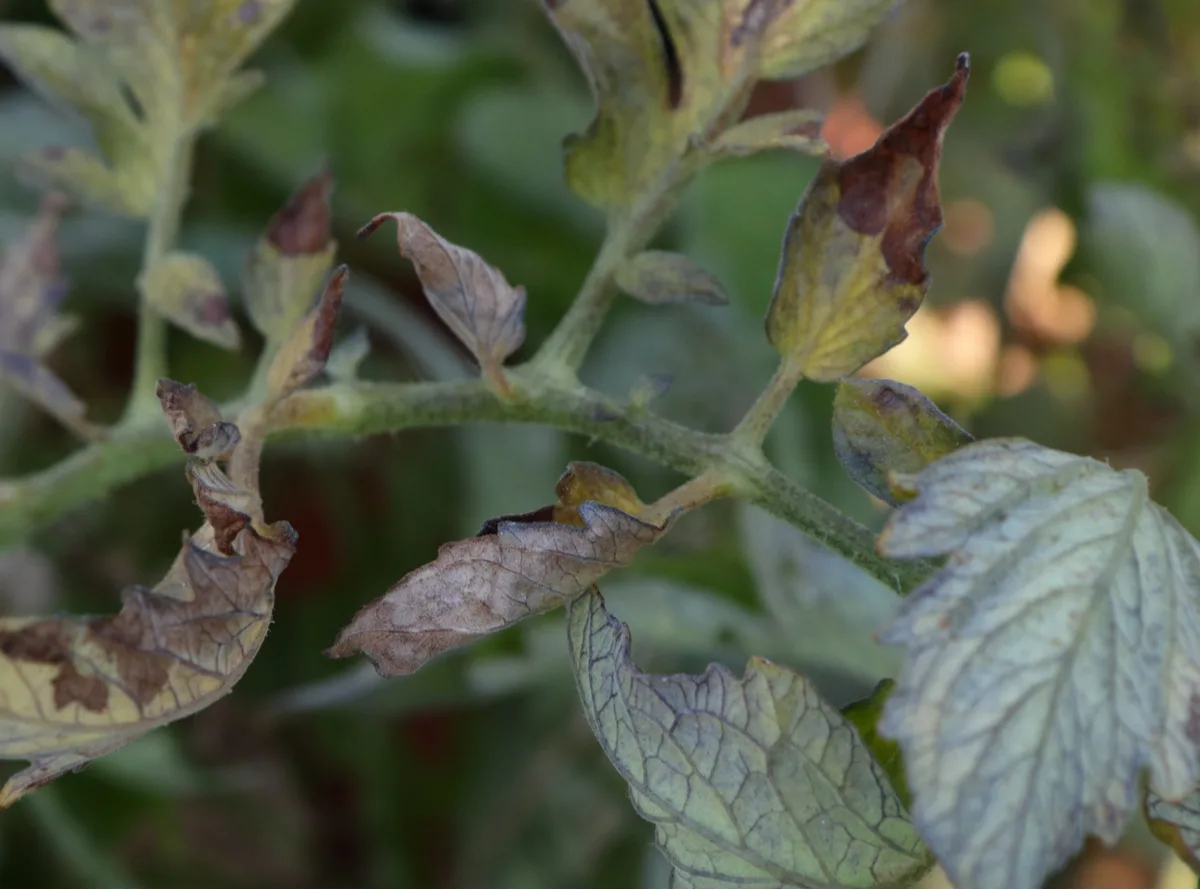
Bacterial Leaf Spot is another common disease that often plagues tomatoes. It namely affects leaves, hence the name, but it can spread to other parts of the plant, including the fruits and stems. Bacterial Leaf Spot is caused by the Xanthomonas bacteria and can spread rapidly, not just on one plant, but to the rest of your vegetable patch too.
Infected plants develop round, brown, water-soaked spots on their leaves. In most cases, these spots are surrounded by a faint yellow halo.
As the disease spreads, so do these spots, causing the entire plant, including its fruit to become speckled with ringed, brown dots. In most cases, the leaves begin to yellow and drop, resulting in defoliation and severe sunscald.
How to Fix
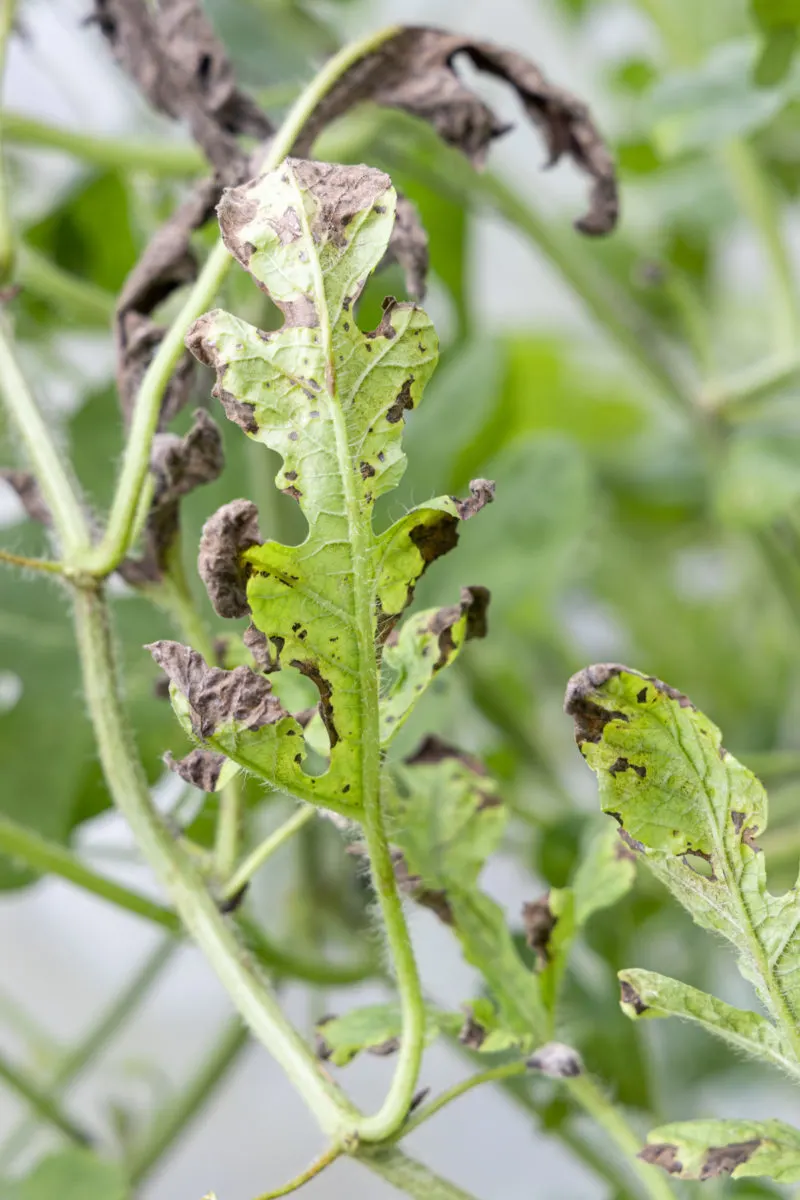
Unfortunately, a tomato plant infected with Bacterial Leaf Spot can’t be saved. If you spot this disease on your plants, remove and dispose of them quickly, before it spreads to your healthier stock.
Prevention is the best cure when it comes to this disease, and luckily, it’s relatively easy to do so.
Your first step is to introduce bacteria-free seeds and transplants into your garden. Check any plants for signs of disease before planting and store seeds correctly to avoid any later issues.
The correct watering methods play an important role in preventing Bacterial Leaf Spot too.
Avoid watering your plants overhead, as it encourages many diseases, including Bacterial Leaf Spot. Instead, focus on the soil at the base of the plant.
Adding to its volatile nature, Bacterial Leaf Spot spreads rapidly and overwinters in the soil and on plant debris. Because of this, it’s extremely important to practice good garden hygiene. Always clean and sterilize your tools before using them and between plants. Another important habit is to keep your beds as clean as possible by removing weeds and any plant debris.
Additionally, crop rotation is vital in preventing the spread of disease and the overall health of vegetable patches, including small ones.
5. Early Blight
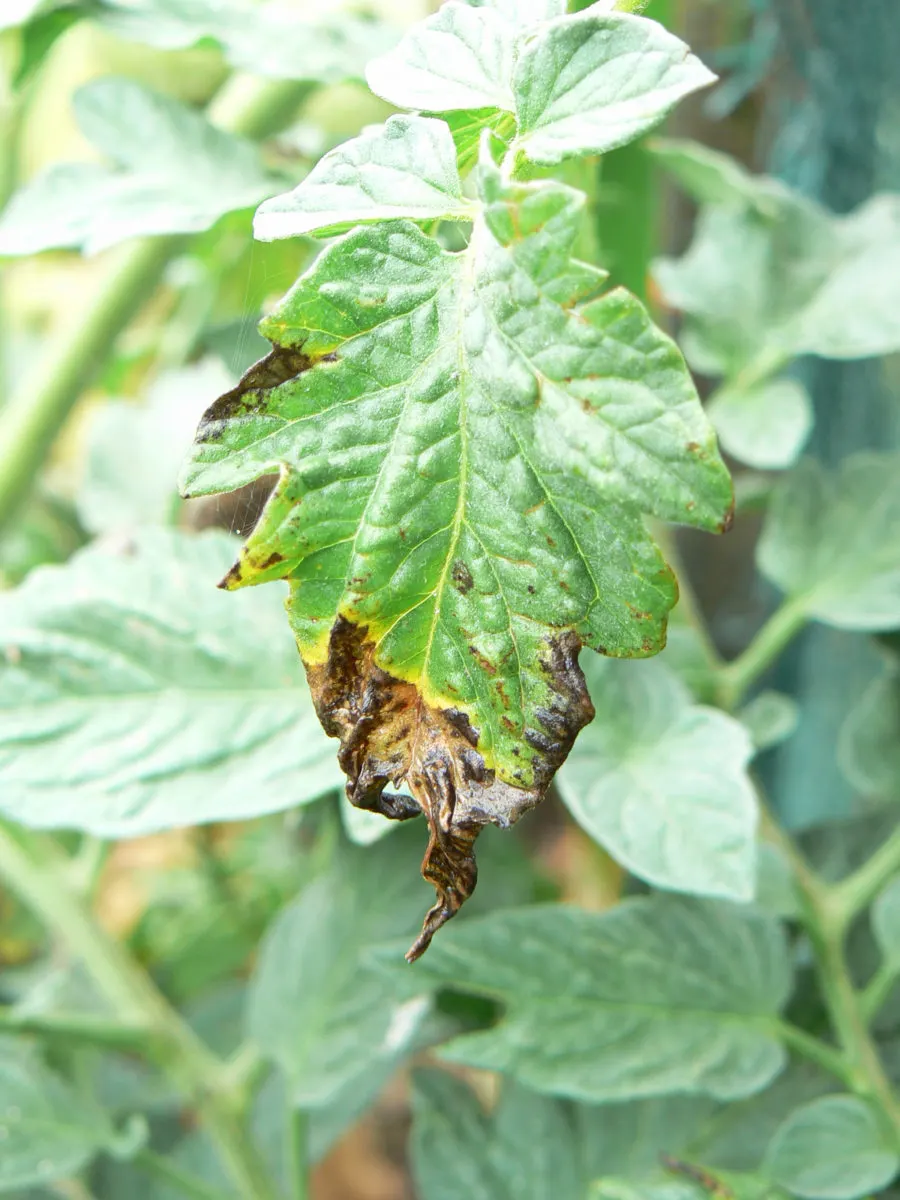
Early Blight is another disease that causes the development of strange brown spots across your tomato plants. This fungal disease is extremely devastating, but if caught in time, you may still be able to save your tomato crops.
Early Blight is caused by the fungus Alternaria solani and spreads by air, but infects plants slowly. Infected plants usually develop small half-inch spots on their leaves. These are usually light brown, with a tan center. During the early stages of Early Blight, the symptoms look very similar to Bacterial Leaf Spot. However, they’re vastly different diseases.
As Early Blight spreads, the small brown spots enlarge, becoming darker and developing a yellow halo. If left, the infected leaves will drop, while the rest of the plant becomes infected. Both the fruits and stems of your tomato plant will develop their own set of spots.
How to Fix
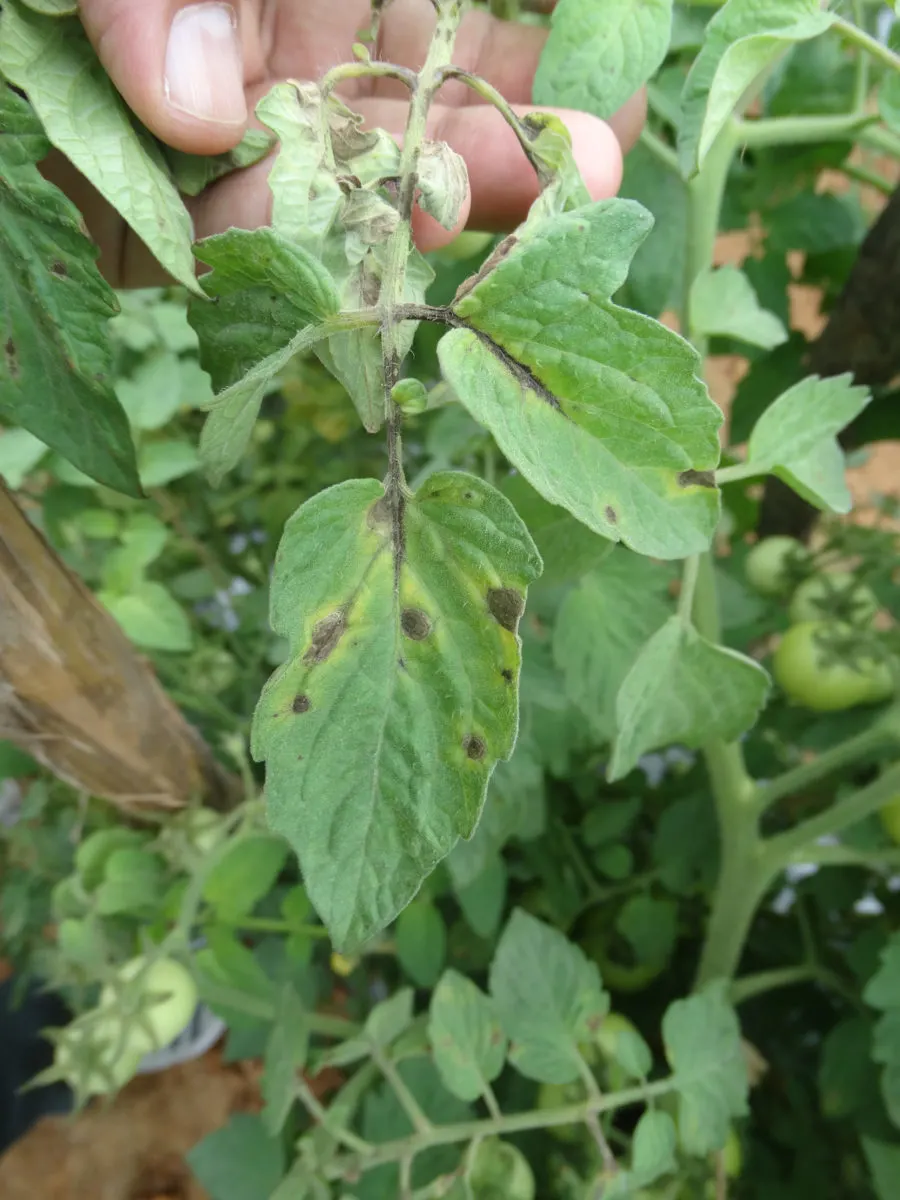
Early Blight, like most diseases, can have devastating effects on all your crops. Luckily, this disease is treatable if caught in time and is easily preventable.
Make inspecting your tomato plant leaves a part of your daily gardening routine. This will help you identify pests and the onset of diseases like Early Blight early on, making it much more manageable.
If you do notice the development of Early Blight spots, remove infected foliage immediately. It’s also advised to apply a copper-based fungicide to your plants to kill any lingering infection.
As is the case with most diseases and pests, prevention is far easier than trying to manage the problem once it’s taken hold.
The Alternaria solani fungus overwinters in the soil and can cling to any plant debris left around your plants. It’s best to practice crop rotation, along with good garden hygiene and the correct watering methods.
Mulching around the base of your plant also prevents water from splashing on the leaves and keeps weeds at bay.
Additionally, you can opt to stake or cage your tomatoes to keep the leggy growth off the ground and encourage air circulation between plants. You can also opt to plant blight-resistant varieties, usually hybrid tomatoes.
6. Late Blight
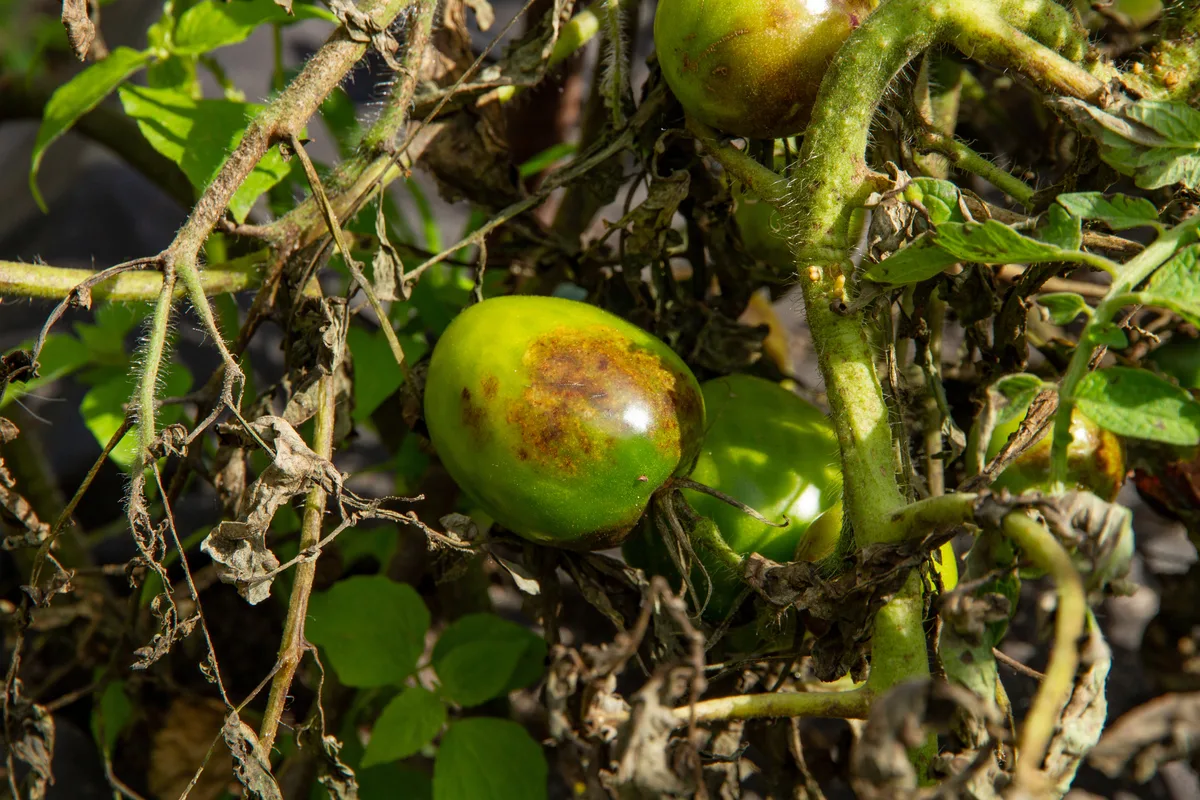
Late Blight is often confused for Early Blight as they’re both fungal diseases that often infect members of the nightshade family and have similar symptoms. However, they’re completely different diseases.
Late Blight is rarer than Early Blight and is caused by the Phytophthora infestans pathogen. Unlike Early Blight, this disease takes hold fast, infecting plants in a matter of hours, with symptoms appearing in just a few days. The entire tomato plant will quickly develop a range of spots.
On leaves, these spots start as a pale green but quickly become a dark brown. Eventually, they’ll blacken. In extremely humid conditions, Late Blight will also cause the growth of a white fuzzy mold on the undersides of leaves.
Stems, on the other hand, develop brown spots off the bat. As it spreads, it becomes darker and can quickly kill off entire stems and vines. On fruits, leathery brown-grey spots appear, along with a white fuzzy mold in humid conditions.
How to Fix
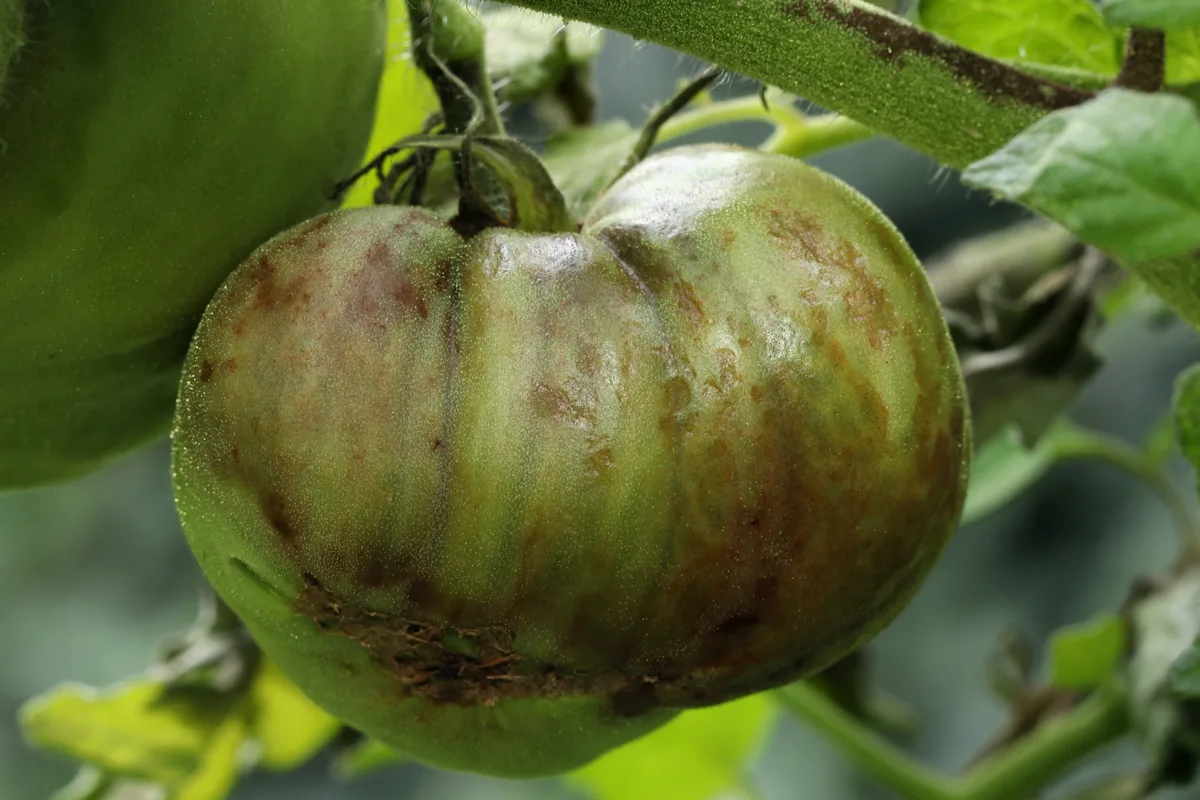
Unfortunately, there is no way to fix Late Blight. Once your tomato plant is infected, it will have to be uprooted and destroyed. However, much like Early Blight, it is a relatively preventable disease.
The correct watering methods, good garden hygiene, and crop rotation are key in keeping diseases from infecting your plants. Ensure you buy disease-resistant varieties, stake or cage your tomatoes, and mulch around their base.
7. Canker
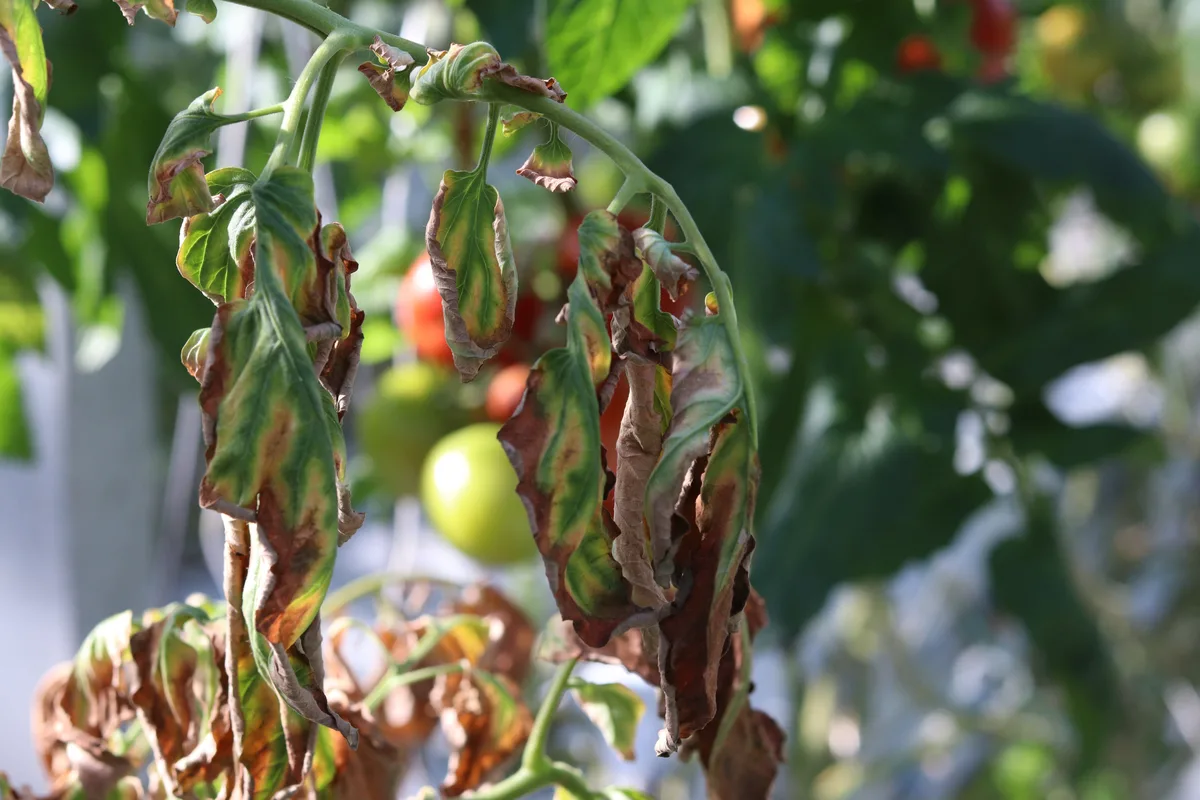
Another common disease that can cause your tomato plants to brown is Canker. Canker is caused by the Clavibacter michidanensis bacteria and can quickly kill off your plants.
Infected leaves develop brown, crunchy edges and large brown patches. In most cases, yellow streaks appear within these browned sections. As Canker worsens, the veins of the leaves may become sunken and begin to darken. Infected leaves will wilt and eventually die off.
A similar streaking brown discoloration appears on the stems too. As it spreads, they usually crack and become gnarled.
Tomato fruits aren’t spared from Canker either. They usually develop small light brown lesions with a yellow halo. These spots are often raised and can start as white before they become brown.
How to Fix
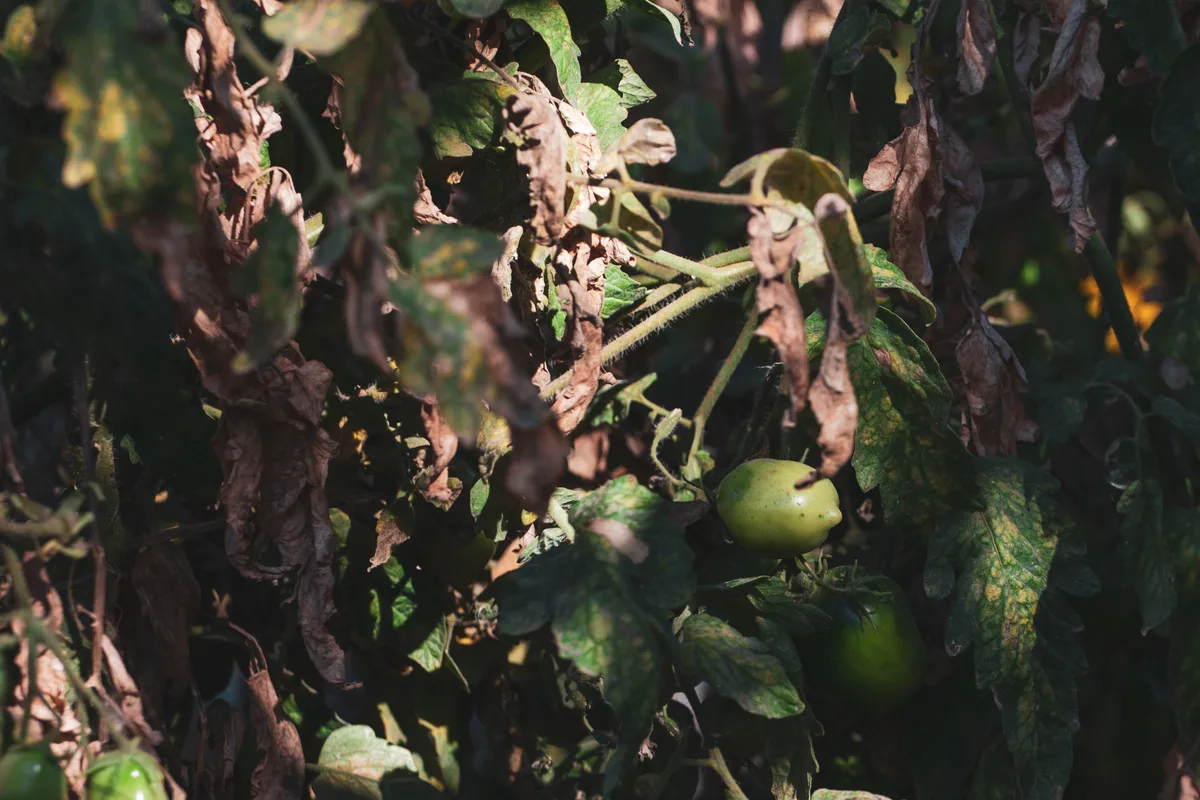
Unfortunately, Canker is incurable. Once your tomato plants are infected, there’s nothing you can do to save them. Uproot infected plants and monitor the rest of your vegetable patch for any signs of spreading.
Luckily, Canker is easily preventable. This bacterial disease thrives in the same conditions and environments as other diseases, including all the ones previously mentioned.
Always buy seeds and transplants from trusted retailers, and check for any signs of disease before carting your plants home. You can also wash your seeds following the above tips for good measure.
Implementing daily checks to your garden routine will help you catch Canker before it can spread to your other plants.
As is the case with most diseases on this list, Canker is preventable by good garden hygiene and the correct watering methods. Mulching also aids in preventing Canker, along with crop rotation.
8. Verticillium Wilt
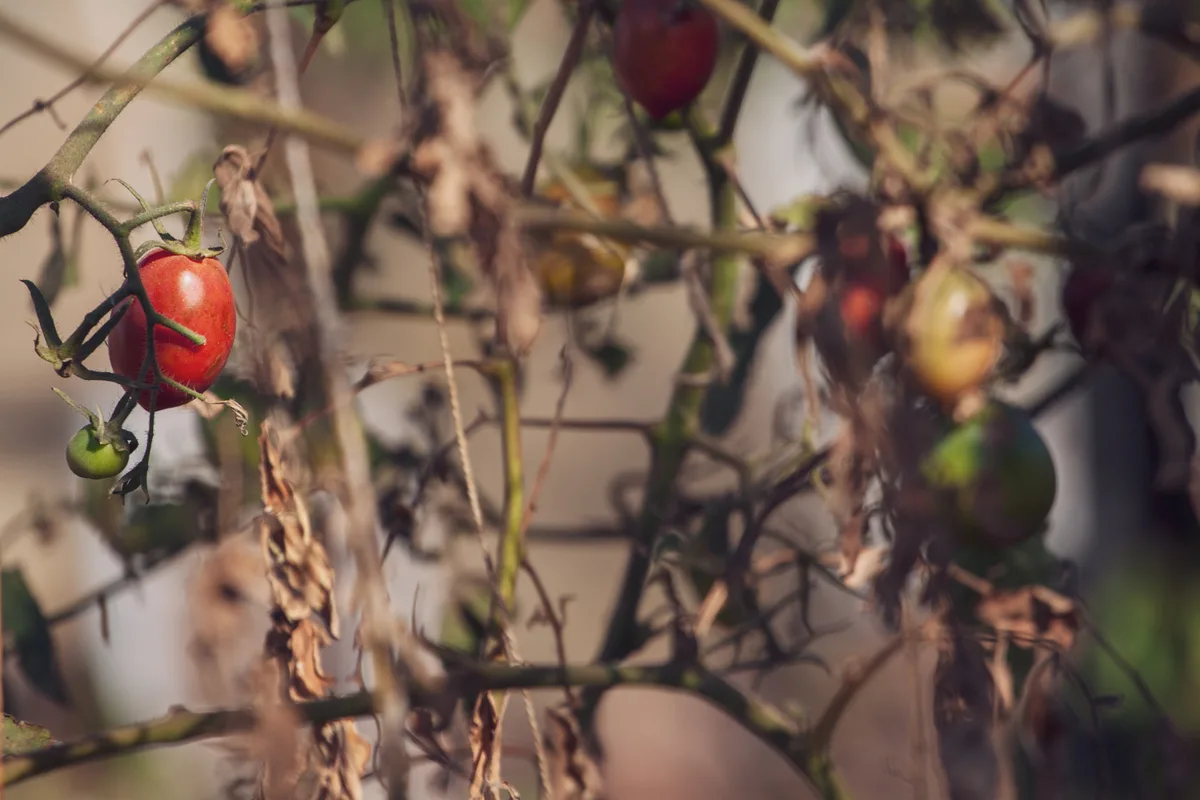
Verticillium Wilt is another extremely dangerous disease that not only destroys tomato plants but also several others, including trees and ornamentals. It’s caused by the soil-borne fungus Verticillium dahliae.
This devastating disease affects different plants in different ways. However, in tomatoes, a key sign is browning leaves and stems.
At first, Verticillium Wilt affects older, lower-lying leaves, causing them to yellow. As it worsens, however, these leaves will develop large brown patches. Eventually, the leaves die and drop from the plant. Infected stems develop brown streaks, which can also appear as patches.
If left unattended, Verticillium Wilt can quickly spread to the rest of your garden, wreaking havoc as it does.
How to Fix
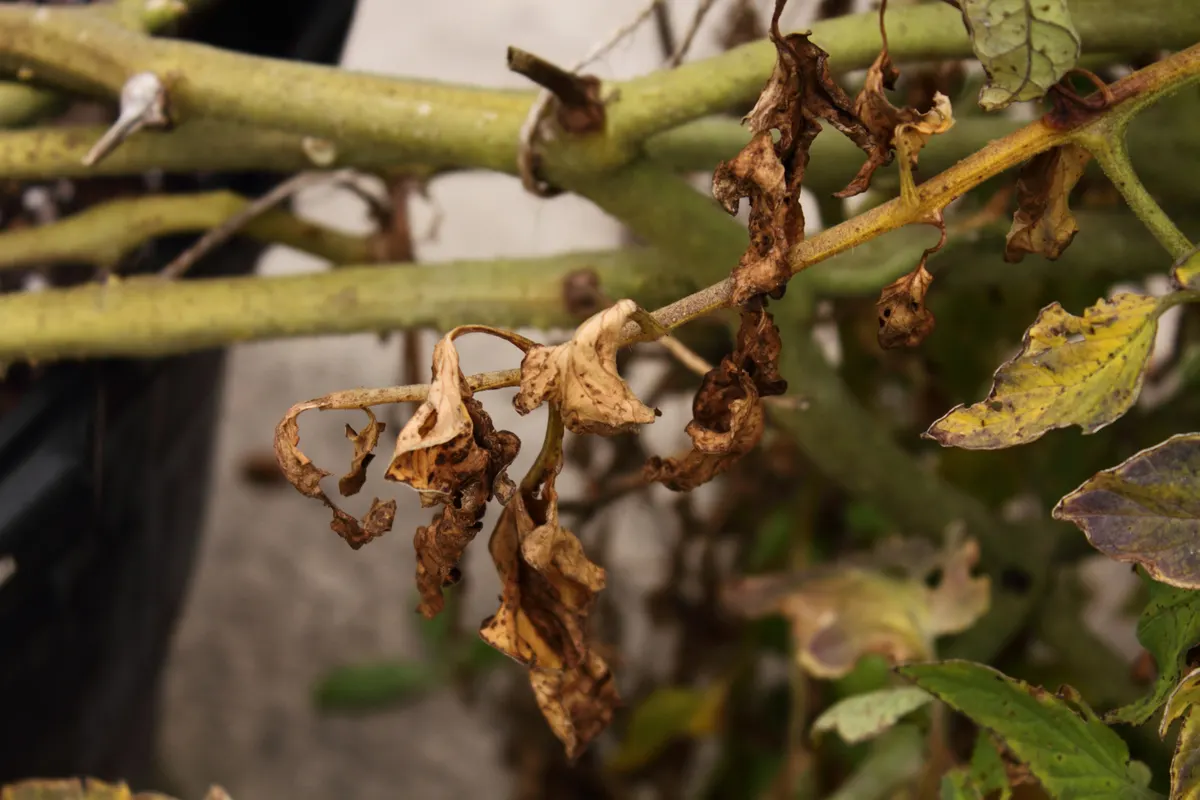
Unfortunately, no fungicide can fight this deadly disease. Tomato plants infected with Verticillium Wilt will have to be uprooted and destroyed.
However, it is easily preventable. For starters, you can simply plant Verticillium Wilt resistant varieties.
Additionally, practicing good garden hygiene, crop rotation, and the correct watering methods, as mentioned above, aid in preventing this disease too.
Final Thoughts
Whether you’re new to growing tomatoes or a veteran gardener, you may still face the problem of browning tomatoes or tomato leaves.
While several diseases and pests can have devastating consequences, all are easily kept at bay. By following the above tips of correct watering methods, mulching, and practicing good garden hygiene, you can have problem-free tomatoes all season long.

